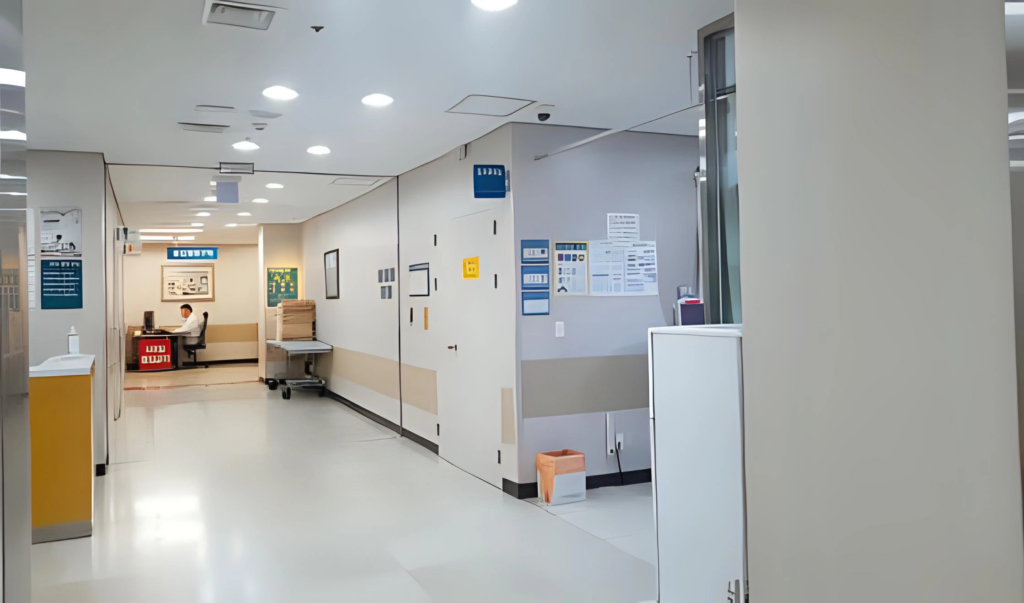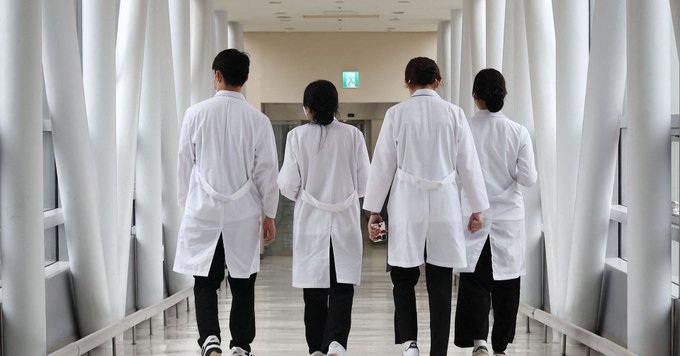On 15 February, the Korean Medical Association (KMA) launched a nationwide strike against the government’s decision to dramatically hike the annual medical school admission quota. The participants of the strike were doctors, trainees, as well as medical students. Being a country that has one of the lowest doctor-to-population ratios, among the other developed ones, this decision to boost medical school admission prompted fierce opposition from the healthcare professionals across South Korea. The crisis intensified when President Yoon Suk-Yeol stated that the government is steadfast in its decision. He further described the reform/policy as more of an ‘essential’ measure taken to ensure proper care for the country’s fast-ageing population.

WHAT HAPPENED?
The government had announced that it wants to increase medical school admissions by 2,000 from the academic year 2025, against the present annual figure of over 3,000. Later on, it was said that there would be an addition of 10,000 by 2035. The reform/policy was criticised by the healthcare professionals for a number of reasons. The first one – no doctors or medical student groups were consulted prior to the launch of this policy. The second reason was identified to be an extra-addition of physicians which can lead to unnecessary medical procedures and damage the quality of service they provide to their patients. The doctors are of the view that there are already sufficient physicians operating within the industry, an increase in numbers has a strong potential to negatively impact the finances of the national health insurance plan.
Of course, there are two sides to every story. Similarly, there is a group of individuals who support this policy. It was revealed via public surveys/opinion polls (such as Gallup Korea) that around 76% of South Korean support the plan for more medical students. This stems from their concerns regarding an acute shortage of professionals for paediatrics, emergency units, as well as clinic outside the greater Seoul area (the remote areas).
Described as a ‘messy policy’, many healthcare authorities (such as the head of the Korea Interns and Residents Association) began submitting their resignations. They also accused the government of ‘demonising’ the existing doctors’ population. This may be because the doctors are concerned that this policy will not only ruin their social status, but will also affect their salary.
EVENTS FOLLOWING THE STRIKE ACTION
After the strike was launched on 15 February, members of KMA along with the head of its regional branches began participating in continuous meetings to discuss the future plan of action. On 17 February, 154 interns and residents across seven hospitals submitted their resignation letters, as per the Health Ministry officials. From 19 February, interns and residents of major hospitals across South Korea commenced mass resignations. By 20 February, the medical professionals had threatened to stop all work by 06:00 hours (local time). As of 21 February, more than 1,600 trainee doctors have staged a walkout and have caused major delays to surgical procedures and treatments. Even though many resignations were not accepted, the doctors and trainees simply did not report for work. The action has majorly affected many provinces/cities namely; Gangwon, North and South Jeolla, Daejeon, Ulsan, North Chungcheong, Seoul, and Jeju.

To tackle the issue with a temporary solution, on 19 February, the Seoul city government officials announced their plans to extend the operating hours of city-run hospitals and community healthcare centres. The operating hours of internal medicine and other key departments at eight city-run hospitals was increased to 20:00 hours (local time) on weekdays. Four hospitals opened their emergency rooms to operate around the clock – Seoul Medical Center, Boramae Medical Center, Dongbu Hospital, and Seonam Hospital. The community healthcare centres will also remain open until 20:00 hours. Along with this, the government has expanded the consulting hours of 97 public hospitals and opened the emergency rooms of 12 military hospitals to the general public.
Meanwhile, mass resignations continue to severely impact operations at prestigious hospitals. These include the Seoul National University Hospital, the Severance Hospital, the Samsung Medical Center, the Asan Medical Center, and the Catholic University of Korea Seoul St. Mary’s Hospital. Some of these have announced plans to alter surgery schedules and patient appointments. Considering that the country’s law imposes curbs on the ability of the medical professionals to strike, the police have issued a warning of arrests for ‘instigators’ of the walkout.
CURRENT SITUATION
The health ministry has raised the country’s medical crisis level to the second highest ‘warning’ criteria; it may further be upgraded to the highest ‘severe’ criteria if the mass resignations continue.
As per the Ministry of Health and Welfare over 6,000 trainee doctors have resigned across 100 hospitals nationwide. This accounts for 55 per cent of the total number of trainee doctors in these hospitals. Of these, 1,630 interns and residents have stopped providing medical services. The government has stated that if the medical professionals refuse to return, their licenses could be suspended for up to a year. Despite the government’s back-to-work order, the trainee doctors have shown no sign of backing down. The disruptions in the medical industry are expected to continue for the month of February. The emergency meetings of representatives of trainee doctors are still ongoing at regular intervals to discuss and/or upgrade their strategy.

FUTURE OUTLOOK
While the full extent of the strike’s impact remains pretty ambiguous, before deciding on a conclusion it is important to consider a few points. First, that South Korea has an extremely privatised healthcare system – over 90% of hospitals are private and most medical procedures are linked to insurance payments. Second, the doctors here are among the best-paid in the world and so if the industry conforms to the new policy, this would not only add an extra burden on the medical industry but also bring in more competition and reduce their income.
This is also not the first time the government has attempted to introduce more graduates; a similar situation was observed in 2020. With the COVID-19 pandemic on its peak, the doctors had the upper hand and were able to successfully keep the government at bay. Over 80 % of junior doctors had extended their participation in protest at the time. However, this time it’s a little different. With the upcoming National Assembly elections in April, the Yoon Suk-Yeol administration is determined to go ahead with this policy and restore its image, previously ‘tarnished’ by a bunch of political scandals.
Considering South Korea’s ‘private sector dominated’ healthcare industry, it is likely that the strike action may continue and the possibility of a total shut down if doctors join full-scale strikes cannot be ruled out.
Follow us on Instagram and Facebook; and subscribe to our LinkedIn Nesletter “Sitata Weekly” to stay safe and make informed travel desicions.




